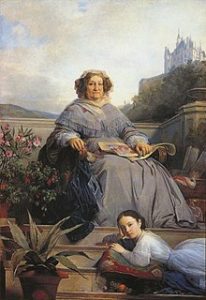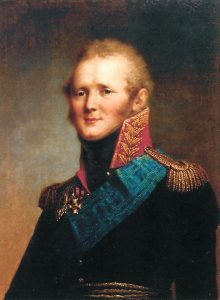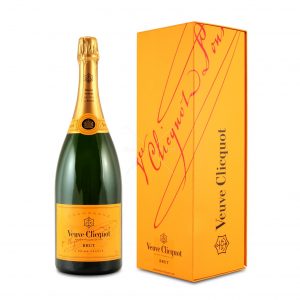How a Welsh harpist helped create one of the world’s most famous marketing icons
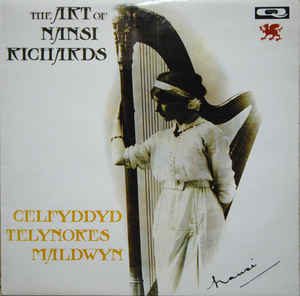
Mary Ann “Nansi Richards” (nee Jones) was a Welsh harpist, sometimes known as the “Queen of the Harp”. She was an expert on both the triple and pedal harps.
Her interest began at the age of 10 and at 12 she owned her first harp. She won the National Eisteddfod harp competition three times in succession and went on to enrol at the Guildhall School of Music but left after a year. She teamed up with American comedian “Happy” Fanny Fields on the Music hall circuit.
Fanny Fields was famous for her Laughing Songs and for the Frog Dance, and the two young women devised tricks for Nansi to do while playing the harp, such as playing with her back turned, or playing two harps simultaneously.
They were very successful and went on to tour America. As well as many theatres the pair played for the Kellogg family and Nansi became friends with W.K. Kellogg.
It was during this time that Nansi pointed out that Kellogg sounded very similar to the Welsh word ‘ceiliog’ which means rooster or cockerel.
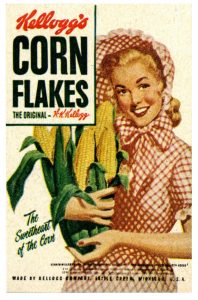
Kellogg’s Corn Flakes had been promoted using various concepts including ‘the sweetheart of the corn’ but the connection with a cockerel and the start of the day was clear.
The idea was given life by advertising agency Leo Burnett and Cornelius was ‘born’. The name is, depending on your point of view, inspired or – sorry – very corny. In some accounts the colouring of Cornelius reflects the Welsh flag with its green, red and white but that focuses on a more modern version of the character. In his original guise Cornelius had a green body, red comb, yellow beak, and multi-coloured (red, green, and yellow) tail and yellow legs and feet.

In early television commercials, Cornelius can’t crow until he eats a bowl of Corn Flakes because “Nothing gets you crowing in the morning like Kellogg’s Corn Flakes.”
A later, longer-running series was the Tall up campaign. These featured a little boy who we see eating his Corn Flakes for breakfast suddenly the image of Cornelius on the box comes to life and takes the boy on a mini adventure. There is always an obstacle or danger and Cornelius produces a box of Kellogg’s Corn Flakes and sings, “Tall up and up and up and up and up with the tall corn taste of Kellogg’s!” The little boy grows duly very tall allowing him to save the day.
https://www.youtube.com/watch?v=RBBy7uRPNOE
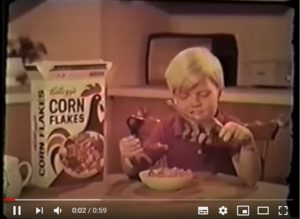
Cornelius still features prominently and proudly on the pack some 63 years after he first appeared
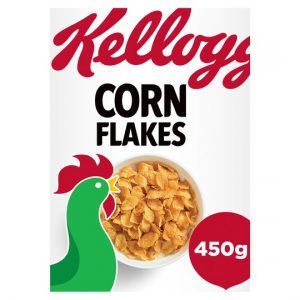
And what happened to Nansi?
Well, she continued to play and tour and frequently appeared on radio and television. She was the official harpist for the Welsh Eisteddfod for a number of years. In 1967 she was awarded the MBE for her services to music in Wales and received in 1977 received an honorary Doctor of Music from the University of Wales. She published a volume of her reminiscences, entitled CRWPWRDD NANSI, in 1972.
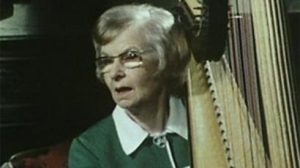
However, as far as I know the marketing industry hasn’t honoured her contribution to marketing iconography in any particular way .
